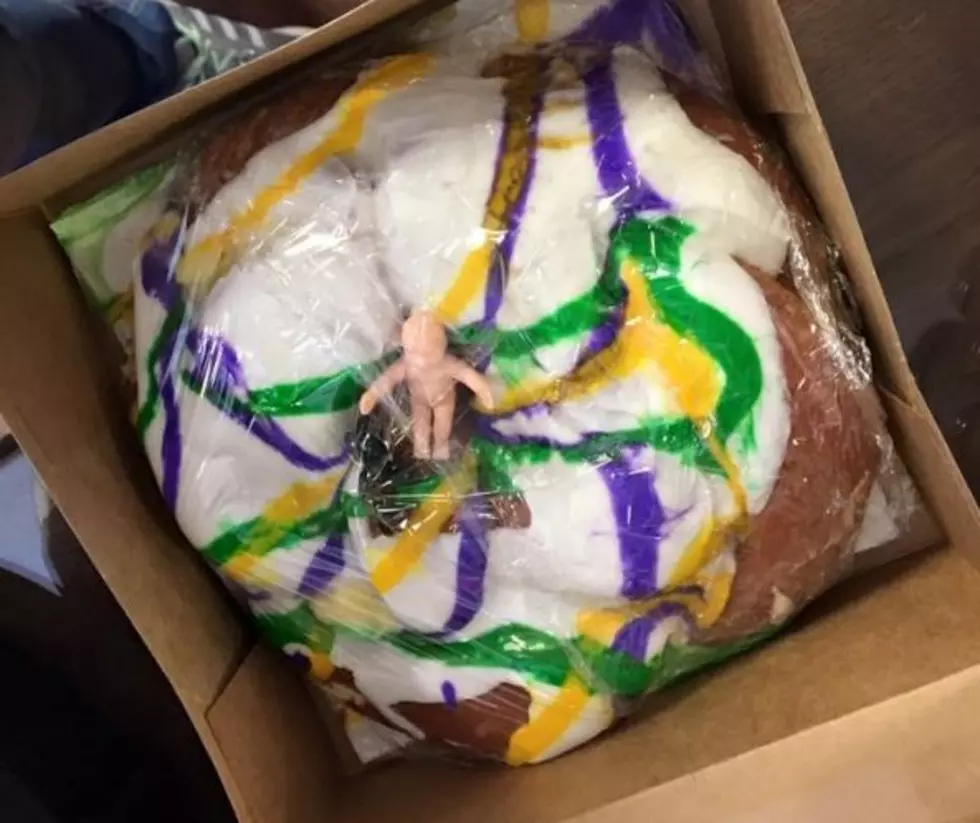
A Slice Of King Cake History
In honor of the last day we're "supposed" to eat king cake (though that won't stop me!), I thought I'd share a brief history of the delicious confection. You might already know some of this, but it's good to refresh the memory, especially when your friends from outside Louisiana ask what the king cake's all about. Enjoy, and feel free to share pics of the king cakes you're enjoying today in the comments! I'm trapped in the station today, so I have to live vicariously through all of you!
The king cake traditionally was served on "Little Christmas" or "Kings' Day" other names for the Feast of the Epiphany, celebrated Jan. 6. Since Epiphany comes on the twelfth day of the Christmas celebration, it also became known as Twelfth Night.
Traditionally the cake was baked on Epiphany Eve and served the following afternoon to family and friends. Today, the cake is served throughout the "Epiphany season," or until Mardi Gras. By the Middle Ages, veneration of the three wise men had spread throughout Europe and Epiphany became known as The Feast of the Three Holy Kings. The cake was baked in honor of the Magi.
Latin Americans, like New Orleanians, place a figure representing the Christ child inside the cake. In other cultures, the king cake might contain a coin, bean, pecan or pea.
In medieval France, the coin finder was expected to make a contribution to a worthy cause, usually the education of a deserving youngster. In some parts of Europe, those who find the bean and pea are king and queen for the day. In New Orleans, the person who receives the piece of cake containing a "baby" must provide the king cake for the next gathering of the season. (In some offices, king cake has become a daily treat for the full length of Carnival.)
Traditional king cake is similar to brioche, a sweetened yeast bread, its only adornment a sprinkling of colored sugar. Today king cakes with an unprecedented array of fillings and flavorings have outdistanced the sugared one in popularity.
More From 99.9 KTDY









